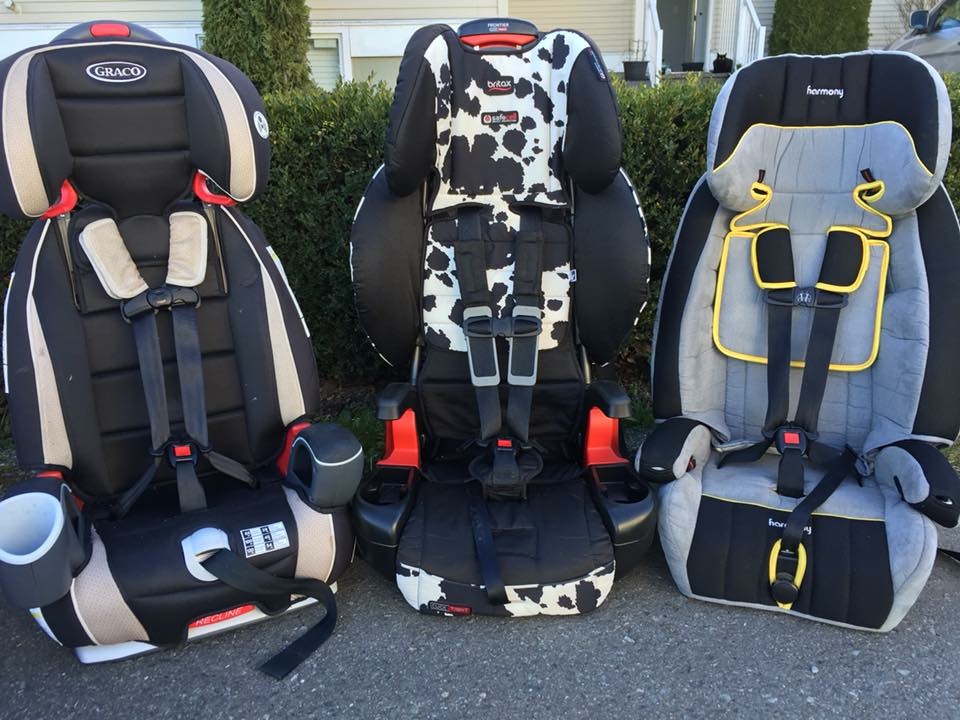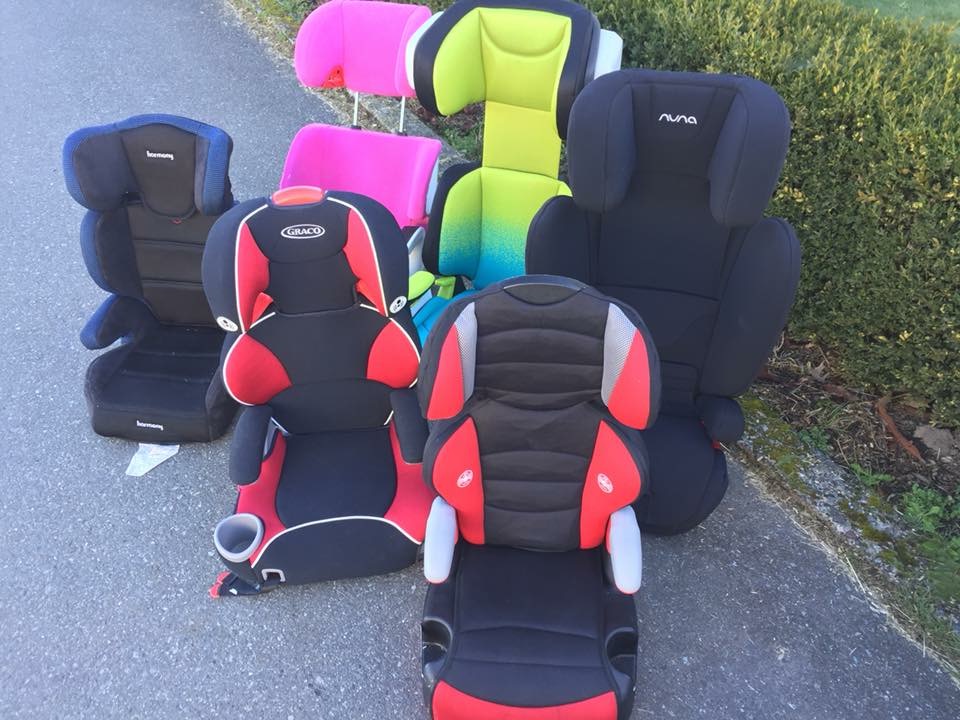To Booster or not to Booster...
Booster seats are an interesting topic and like all other stages in car seats not a graduation, boosters are for big kids too! Adult seat belts don’t fit children the same way they fit adults and booster seats are the solution, they do just what they say, give a boost. By elevating the child, the geometry of the belt fit changes.
Booster seats come in all shapes and sizes, just like us! Let’s break it down -
Top Left - There are some convertible seats (3 or 4 in 1’s) that will rear face and forward face with a 5 point harness and then convert to a high back and/or a no back booster as well.
Top Right - Combination seats are seats that will forward face using a 5 point harness system and then convert to a high back and possibly a no back booster as well.
Bottom Left - Dedicated high back booster is a booster seat only and comes with a back and head support system
Bottom Right - No Back Booster (or sometimes called Low Back Booster or Backless Booster) is just a seat pan. Sometimes with arms and sometimes without.
It is important to note that at this time, booster seats cannot be used on airplanes. Booster seats do still have expiration dates and specific instructions for use. Read your manual, even if it seems obvious. Booster seats CANNOT be used with a lap belt only (a seat belt that only goes across the lap) and last, please note that some booster seats require that a vehicle head restraint be behind it. This is especially important if you have a booster rider that is using a no back booster, they MUST have a head rest behind them in order to support their head and neck in the event of a collision.
Deciding which booster seat is best for your child is important. Just like car seats, they aren’t all the same and each seat can provide a different fit for each child and sometimes it can even vary by vehicle. Try before you buy! If you are in the market for a booster seat, get in touch and Safe Travels can help you make the best decision. It’s important to note that one booster seat is not necessarily safer than any others. They all pass the same testing in the Canadian market, just like harnessed seats. The right booster seat is like the right pair of jeans, they fit in all the right places!
Lap Portion of Seat Belt
We want the lap portion of the belt to actually be across the lap or pelvis, not across the fleshy part of the belly or above the hip/pelvis area.
This lap belt is a little high and you can see that it is riding into this child’s stomach. We want the lap belt to lay across strong bones, not fleshy and soft areas.
This lap belt fits much better and you can see that it is sitting lower on the child’s pelvis and touching the child’s thighs.
Shoulder Portion of Seat Belt
Where the shoulder belt sits on the child is also important, as I am sure you guessed. The shoulder belt needs to have contact at the front of the child’s shoulder (no floating just in front of the shoulder) and should run nicely in-between the side of the shoulder and the neck. The picture to the left shows a good shoulder belt placement.
This picture shows a shoulder belt that is floating - not making contact with the child’s shoulder at all. You can see that it doesn’t actually touch the child until the chest area.
Getting to Know Your Booster
When your child is in a high back booster, there will be a shoulder belt guide on each side to route the shoulder belt through. If your seat has an adjustable head rest, the guide will be at the bottom of the headrest (usually they are red so they stand out). Sometimes you will need to remove or pull back fabric to find them. Always read your manual, instructions for use should be outlined in there. If you have a harnessed seat that converts into a booster, you must read the manual to ensure that you are converting it properly.
Most low back boosters come with a piece of black material with a red plastic piece attached to it. This is also a type of shoulder belt guide. This picture demonstrates one being used to help get a better shoulder belt. Please refer to instructions for proper use. It is also worth noting that dealing with these can be a challenge and less than ideal in many circumstances.
If the belt doesn't fit properly, your child is less likely to be comfortable and that makes them adjust themselves or move out of position. A classic example of this is when the shoulder belt is rubbing against the child’s neck. This usually causes the child to shift/lean to the opposite side and this creates further problems with belt fit. If your child is leaning out of position, the seat belt isn’t able to do its job when it needs to. This is why it is so important to have discussions about proper belt fit and safety with your booster riders. I often say to parents that putting your child in a booster is putting their safety into their hands and you are trusting them to sit properly for the ENTIRE ride, EVERY time. It is hard to sit still and most parents know when their child is mature enough to use a booster. The legal minimums are low and instead of just worrying about age, weight and height, we need to also consider maturity.
If you have any questions about using a booster seat, purchasing a booster seat or assessing your child’s readiness for a booster seat, please get in touch. Using a booster seat is so important and often a stage of car seats that gets rushed through. Remember, boosters are for big kids too! We know that most adult seat belts won’t fit a human until they are around 4’9”…more on that in another post soon!
















